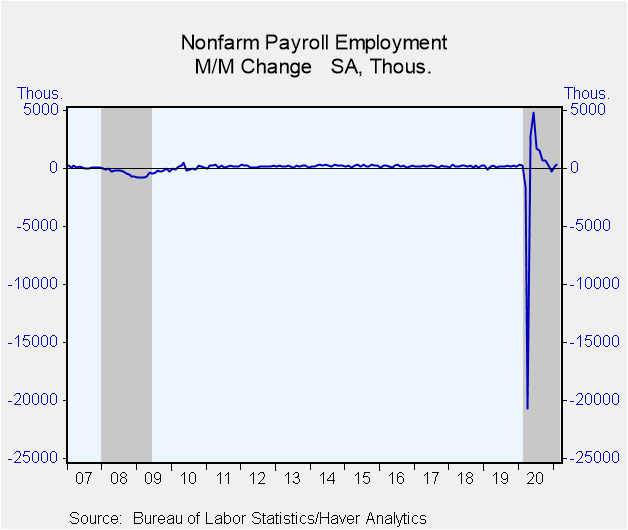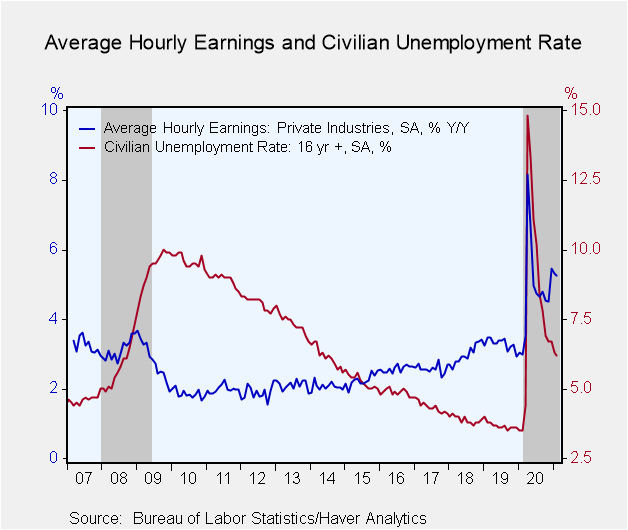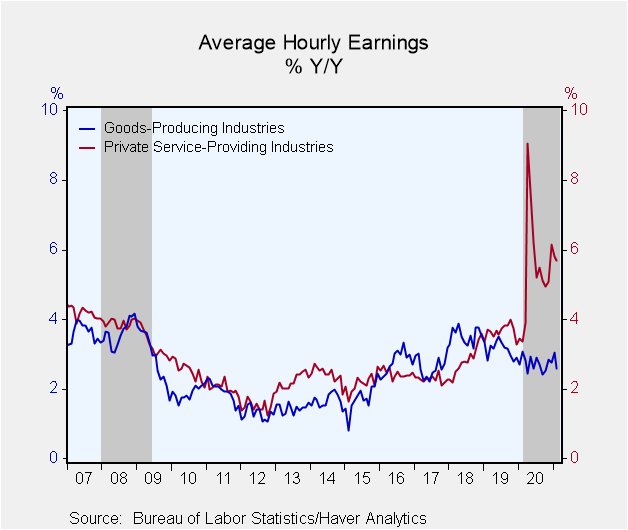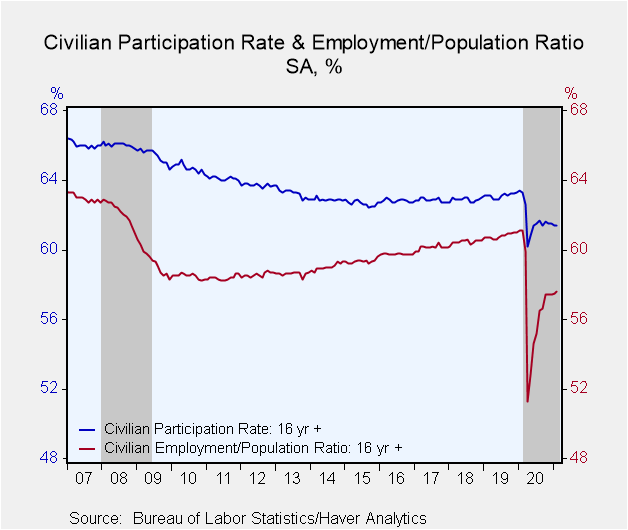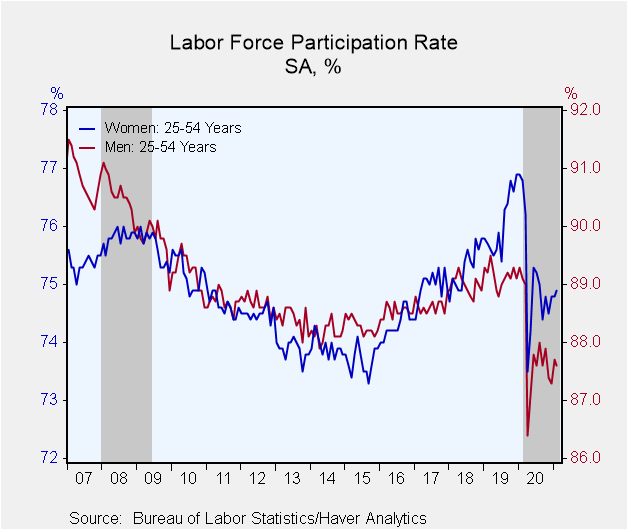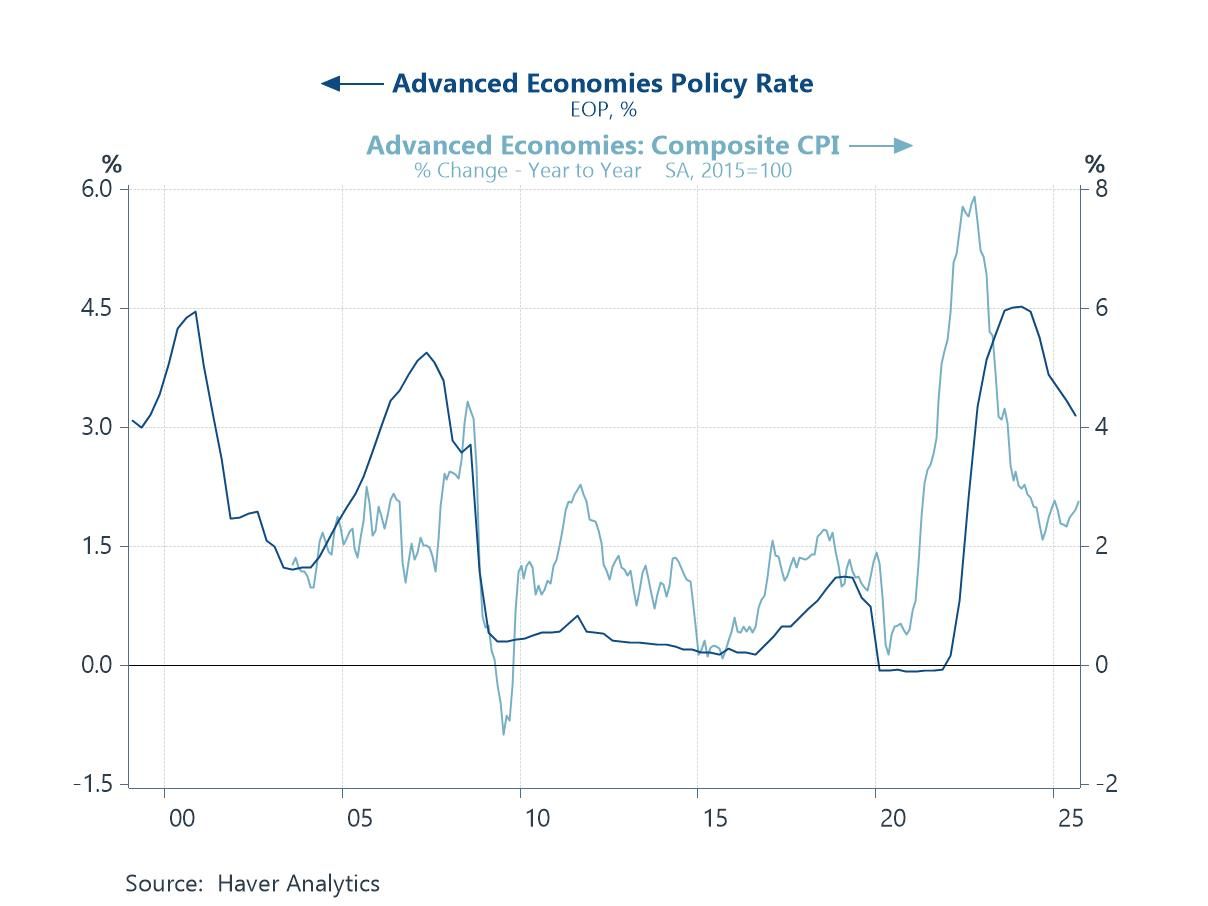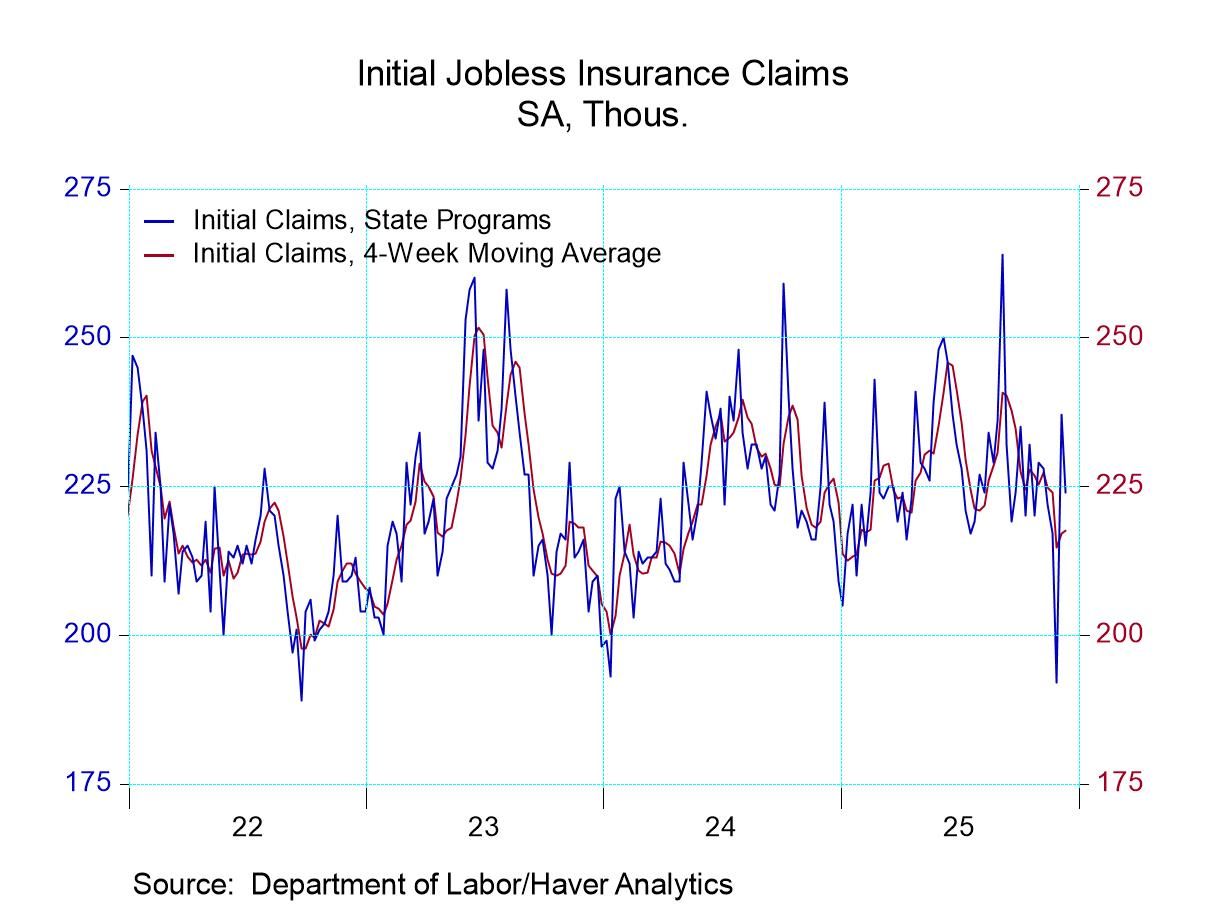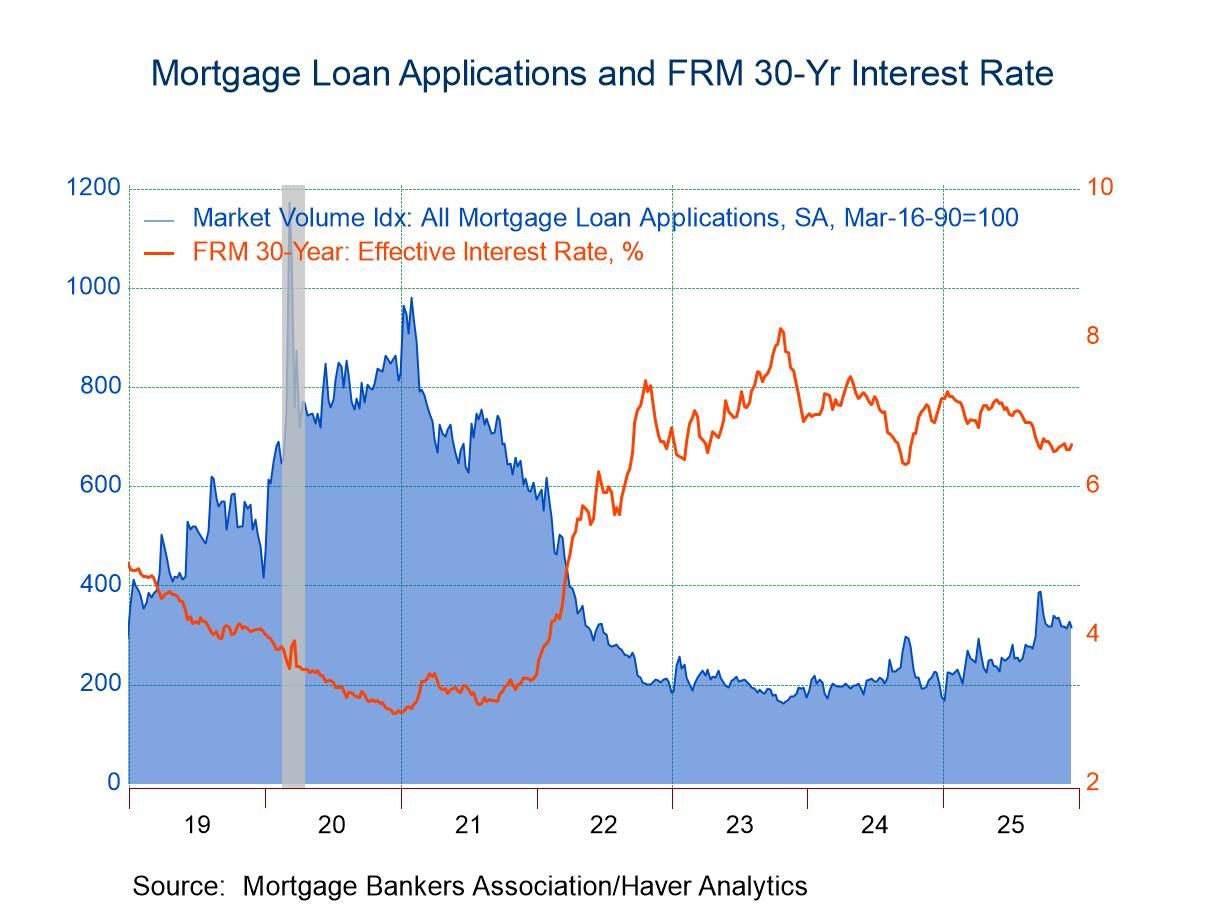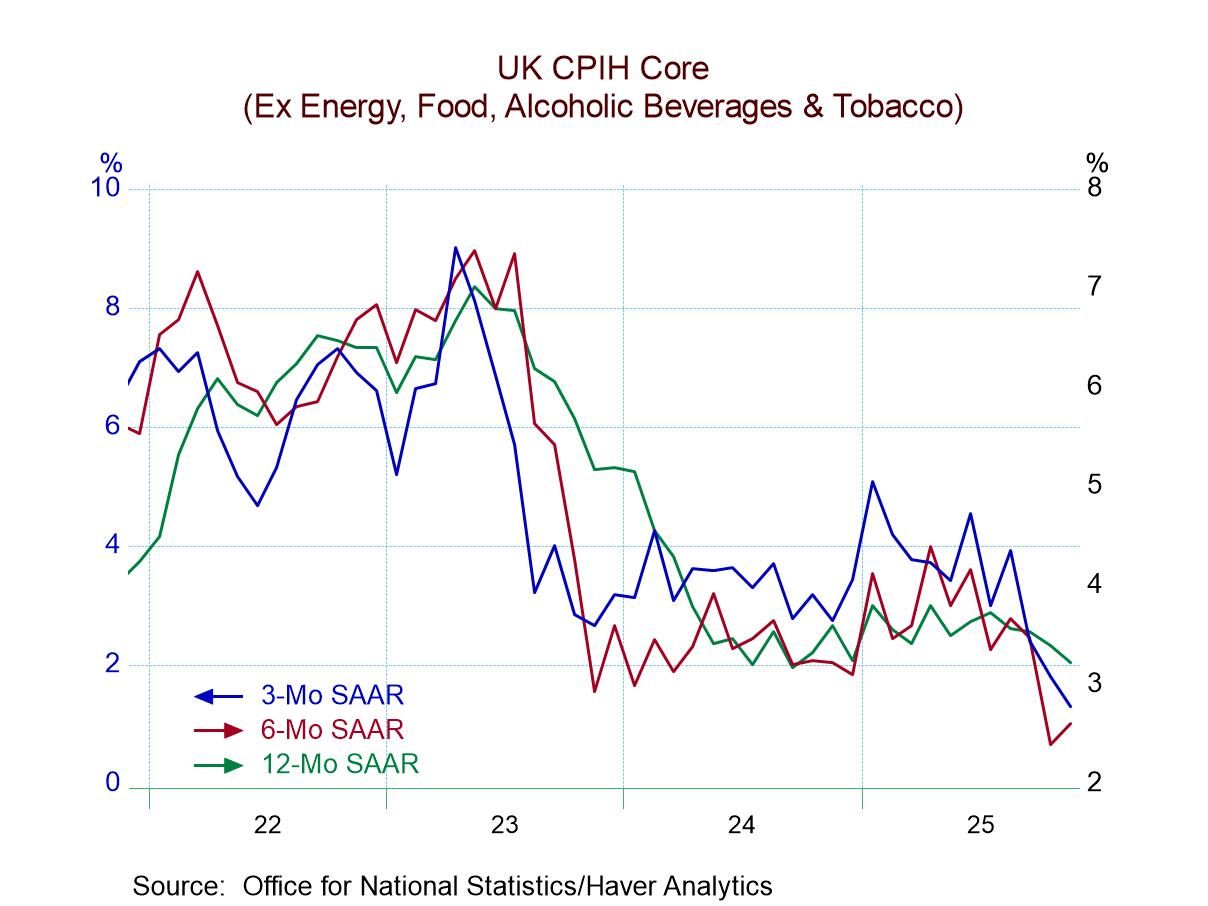 Global| Mar 05 2021
Global| Mar 05 2021U.S. Payrolls Surge in February and Jobless Rate Slips
by:Tom Moeller
|in:Economy in Brief
Summary
• Leisure & hospitality drives gain in jobs. • Earnings growth remains moderate m/m. • Unemployment rate declines to lowest level since March 2020. As the economy began to reopen more widely after closures due to COVID-19, the job [...]
• Leisure & hospitality drives gain in jobs.
• Earnings growth remains moderate m/m.
• Unemployment rate declines to lowest level since March 2020.
As the economy began to reopen more widely after closures due to COVID-19, the job market has revived. Nonfarm payroll employment surged 379,000 (-6.0% y/y) in February following a 166,000 January gain, revised from 49,000. December's decline was deepened to -306,000 from -227,000. A 200,000 increase in February had been expected in the Action Economic Forecast Survey. The forecast estimates of the February payroll change ranged from 43,000 to 350,000 amongst 25 forecasters. The BLS surveys for the February employment report were taken during the week including the 12th.
Average hourly earnings growth of 0.2% (5.3% y/y) last month compared to 0.1% in January, revised from 0.2%. December earnings surged 1.0%. A 0.2% increase in February had been expected.
The unemployment rate edged lower to 6.2% from 6.3% in January. An uptick to 6.4% had been expected. Employment in the household survey rose 208,000 (-5.4% y/y) after increasing 201,000 in January while the labor force edged 50,000 higher (-2.6% y/y) after declining 406,000 in January. The overall jobless rate, including those who were marginally attached or working part-time for economic reasons, held steady at 11.1%, remaining at the lowest point since March of last year.
From the payroll survey, the 379,000 increase in employment reflected a 355,000 worker increase (-20.2% y/y) in leisure & hospitality employment as restaurants and hotels were allowed to accept higher capacity. Professional & business services jobs gained 63,000 (-3.4% y/y) while education & health services jobs employment rose 44,000 (-5.3% y/y). The number of jobs in retail trade increased 41,100 (-2.0% y/y) but financial services jobs declined 5,000 (-1.0% y/y). Information sector jobs fell 3,000 (-8.1% y/y).
Factory sector employment rose 21,000 (-4.1% y/y) but construction sector employment declined 61,000 (-3.8% y/y) as unusually severe winter snowstorms hit during the survey week. Mining & logging employment also fell 8,000 (-13.6% y/y).
Government sector employment declined 86,000 (-5.9% y/y) as local government jobs fell 44,000 (-6.8% y/y). State government employment declined 39,000 (-6.5% y/y) while Federal government employment eased 3,000 (+0.3% y/y).
Average hourly earnings rose 0.2% as construction sector earnings gained 0.3% (3.1% y/y) but factory sector pay eased 0.1% (+2.9% y/y). Financial activity earnings strengthened 1.2% (7.8% y/y) and information industry earnings rose 0.7% (4.2% y/y). Professional & business service sector earnings rose 0.4% (4.2 y/y) for the third straight month. Education & health service sector earnings eased 0.1% (4.9% y/y). Retail trade earnings fell 0.6% (+5.2% y/y).
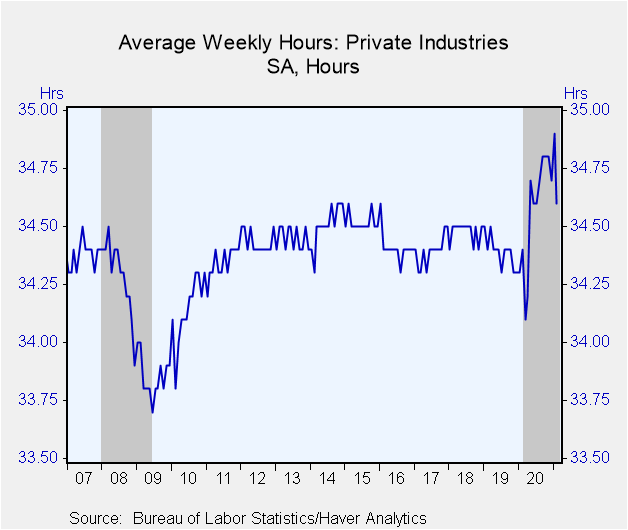 The length of the private sector average workweek dropped to
34.6 hours, its shortest since July and down from the January peak of 34.9
hours. Construction sector hours plummeted to 38.2 from 39.3 due to winter
snows. Factory sector hours eased to 40.2 from 40.4. Private service sector
hours shortened to 33.6 from 33.9 as financial activities hours shortened to
37.7 from 37.8. Professional & business service hours fell to 36.6 from 36.9
while education & health sector hours fell to 33.2 from 33.6. Leisure &
hospitality hours fell to 25.3 from 25.8.
The length of the private sector average workweek dropped to
34.6 hours, its shortest since July and down from the January peak of 34.9
hours. Construction sector hours plummeted to 38.2 from 39.3 due to winter
snows. Factory sector hours eased to 40.2 from 40.4. Private service sector
hours shortened to 33.6 from 33.9 as financial activities hours shortened to
37.7 from 37.8. Professional & business service hours fell to 36.6 from 36.9
while education & health sector hours fell to 33.2 from 33.6. Leisure &
hospitality hours fell to 25.3 from 25.8.
From the household survey, the reduced unemployment rate of 6.2% in February occurred as the labor force participation rate held steady at 61.4%. It remained down from 63.4% in January of last year. The teenage participation rate rose to 36.1%. For those aged 20-24, it eased to a five-month low of 70.1%. For workers aged 25-54, the rate edged held steady at 81.1% and remained below the January 2020 high of 83.0%. For men aged 25-54, the rate eased to 87.6% and remained down from the high of 89.5% in March of 2019. For women of that age, the rate edged higher to 74.9% but remained well below the record high of 76.9% in January of last year. For workers aged 55 & over, the participation rate held steady at 38.3%, down from 40.3% one year earlier.
The employment/population ratio for all workers edged higher to 57.6% in February, up from last April's low of 51.3%. It remained well below the February 2020 high of 61.1%. The average duration of unemployment rose sharply to 27.6 weeks, the longest since July 2016.
The teenage unemployment rate eased to 13.9% from 14.8% in January and remained below the record 32.1% last April. The rate for workers aged 20-24 eased to 9.6%, its lowest since March of last year. For workers aged 25-54, the rate slipped to 5.7%, down from the 12.8% April high. For those over 55, the jobless rate held steady at 5.3%, well below the record 13.6% in April.
By educational attainment, the rate of unemployment of workers without a high school diploma rose to 10.1% from 9.1% but remained well below the 21.0% rate in April. High school graduates without any college were 7.2% unemployed last month, down from April's high of 17.3% but higher than the 3.5% rate in February 2020. Those with some college but no degree were 5.9% unemployed, down sharply from the 15.0% April peak but still up from January 2020's record low of 2.7%. College graduates were 3.8% unemployed last month, still significantly higher than their 1.9% low in February of last year.
The employment & earnings data are collected from surveys taken each month during the week containing the 12th of the month. The labor market data are contained in Haver's USECON database. Detailed figures are in the EMPL and LABOR databases. The expectations figures are in the AS1REPNA database.
| Employment (SA, M/M Change, 000s) | Feb | Jan | Dec | Feb Y/Y | 2020 | 2019 | 2018 |
|---|---|---|---|---|---|---|---|
| Payroll Employment | 379 | 166 | -306 | -6.0% | -5.8% | 1.3% | 1.6% |
| Previous Estimate | -- | 49 | -227 | -- | -- | -- | -- |
| Manufacturing | 21 | -14 | 35 | -4.1 | -5.0 | 1.0 | 2.0 |
| Construction | -61 | 1 | 47 | -3.8 | -3.0 | 2.8 | 4.6 |
| Private Service-Producing | 513 | 103 | -356 | -6.3 | -6.6 | 1.4 | 1.5 |
| Government | -86 | 76 | -32 | -5.9 | -3.1 | 0.7 | 0.5 |
| Average Weekly Hours - Private Sector | 34.6 | 34.9 | 34.7 | 34.4 | 34.6 | 34.4 | 34.5 |
| Private Sector Average Hourly Earnings (%) | 0.2 | 0.1 | 1.0 | 5.3 | 4.8 | 3.3 | 3.0 |
| Unemployment Rate (%) | 6.2 | 6.3 | 6.7 | 3.5 | 8.1 | 3.7 | 3.9 |
Tom Moeller
AuthorMore in Author Profile »Prior to joining Haver Analytics in 2000, Mr. Moeller worked as the Economist at Chancellor Capital Management from 1985 to 1999. There, he developed comprehensive economic forecasts and interpreted economic data for equity and fixed income portfolio managers. Also at Chancellor, Mr. Moeller worked as an equity analyst and was responsible for researching and rating companies in the economically sensitive automobile and housing industries for investment in Chancellor’s equity portfolio. Prior to joining Chancellor, Mr. Moeller was an Economist at Citibank from 1979 to 1984. He also analyzed pricing behavior in the metals industry for the Council on Wage and Price Stability in Washington, D.C. In 1999, Mr. Moeller received the award for most accurate forecast from the Forecasters' Club of New York. From 1990 to 1992 he was President of the New York Association for Business Economists. Mr. Moeller earned an M.B.A. in Finance from Fordham University, where he graduated in 1987. He holds a Bachelor of Arts in Economics from George Washington University.


